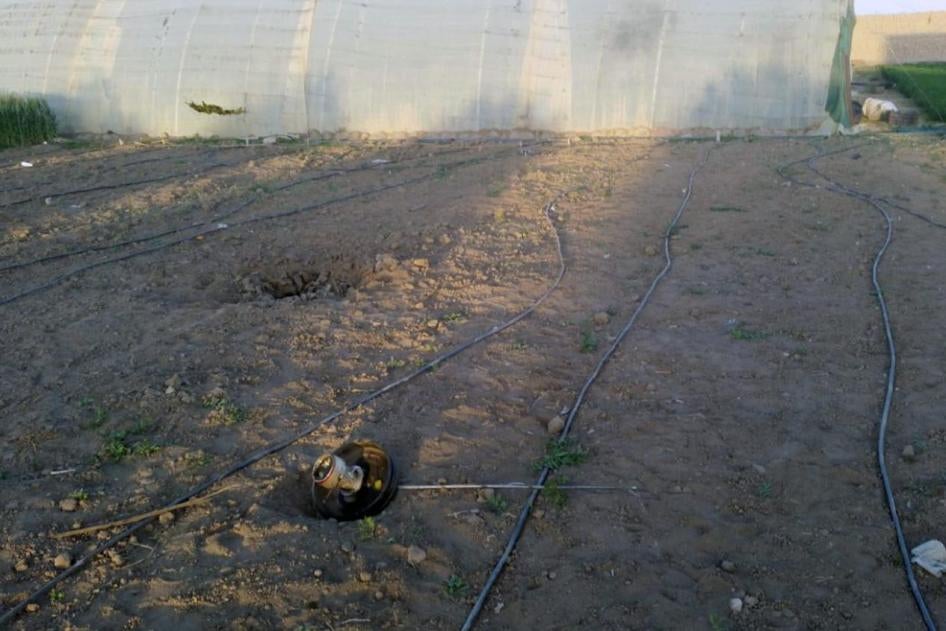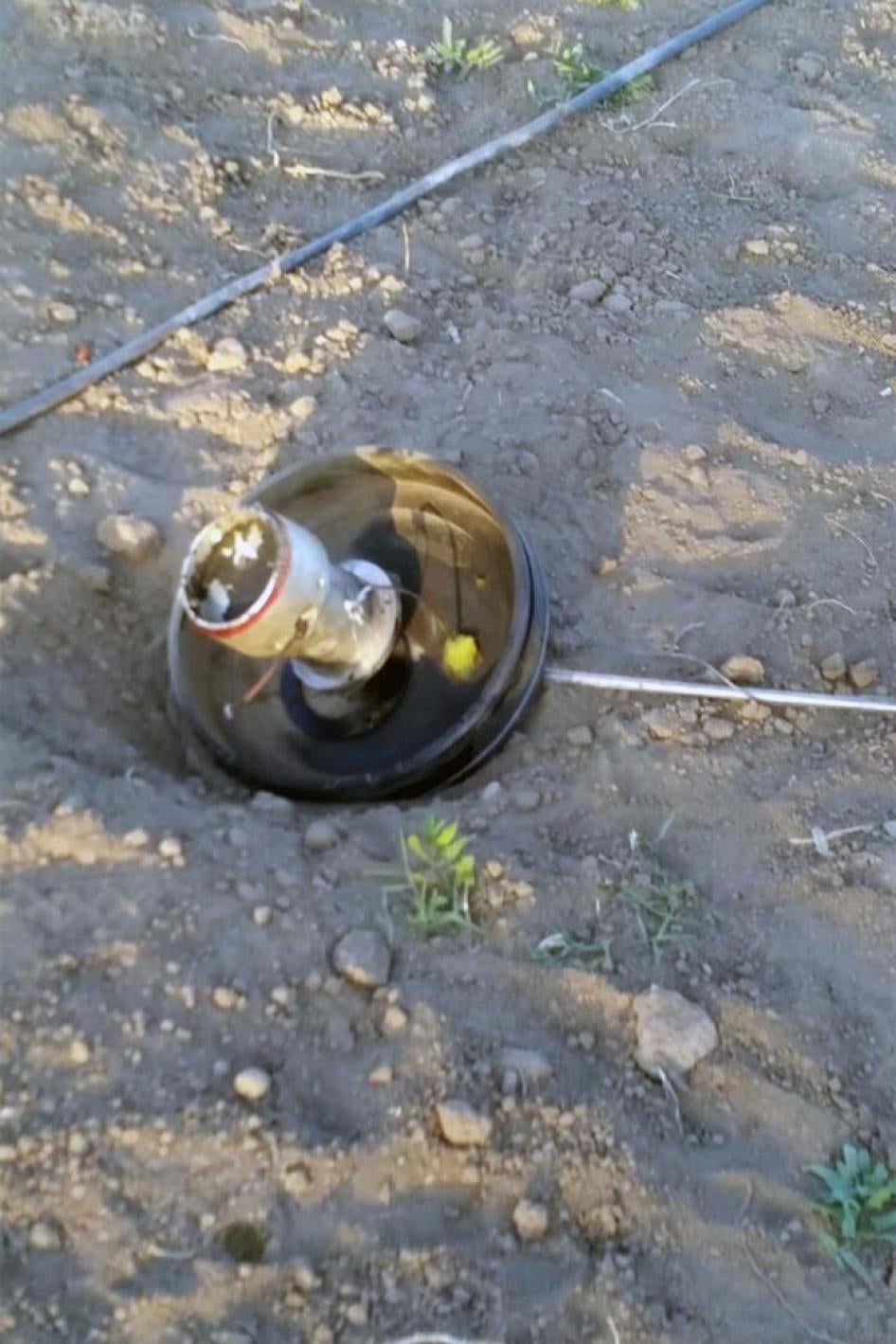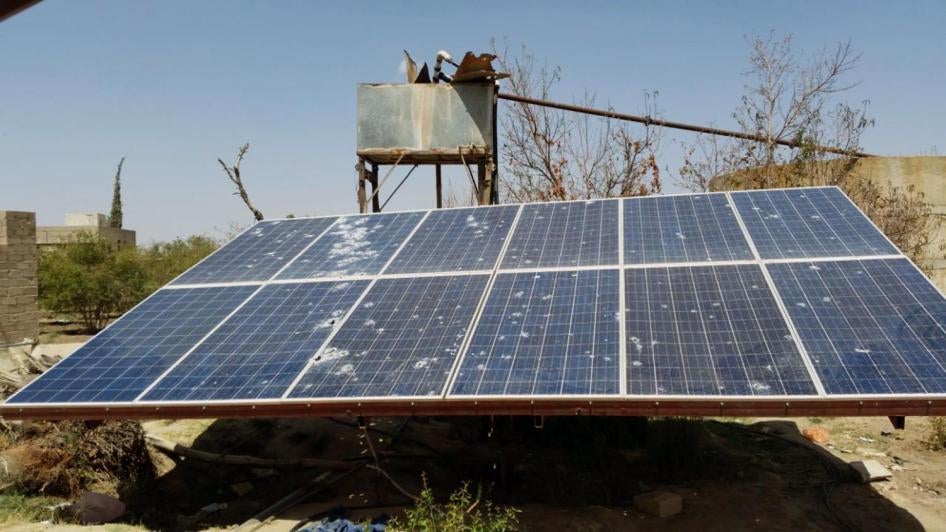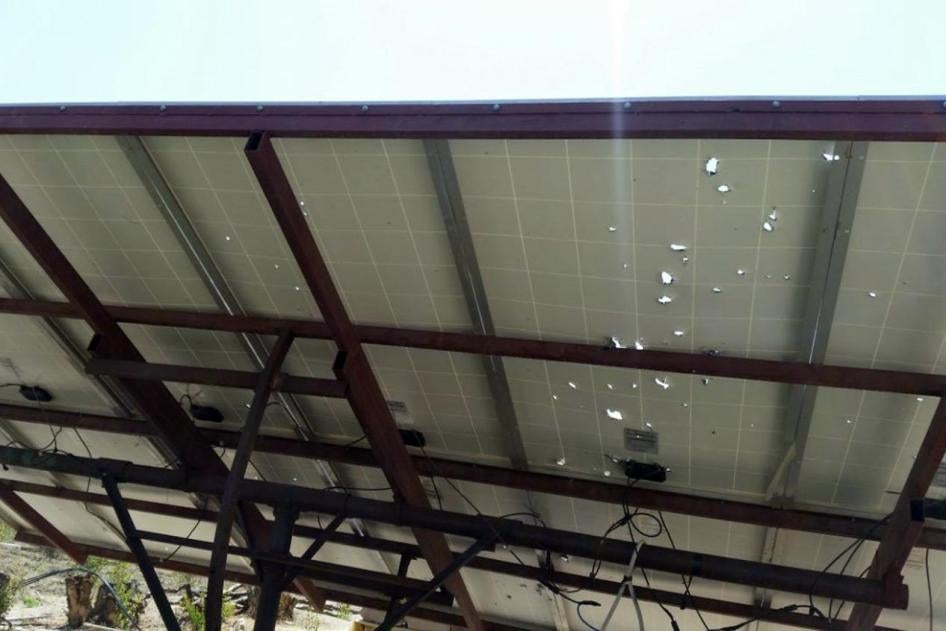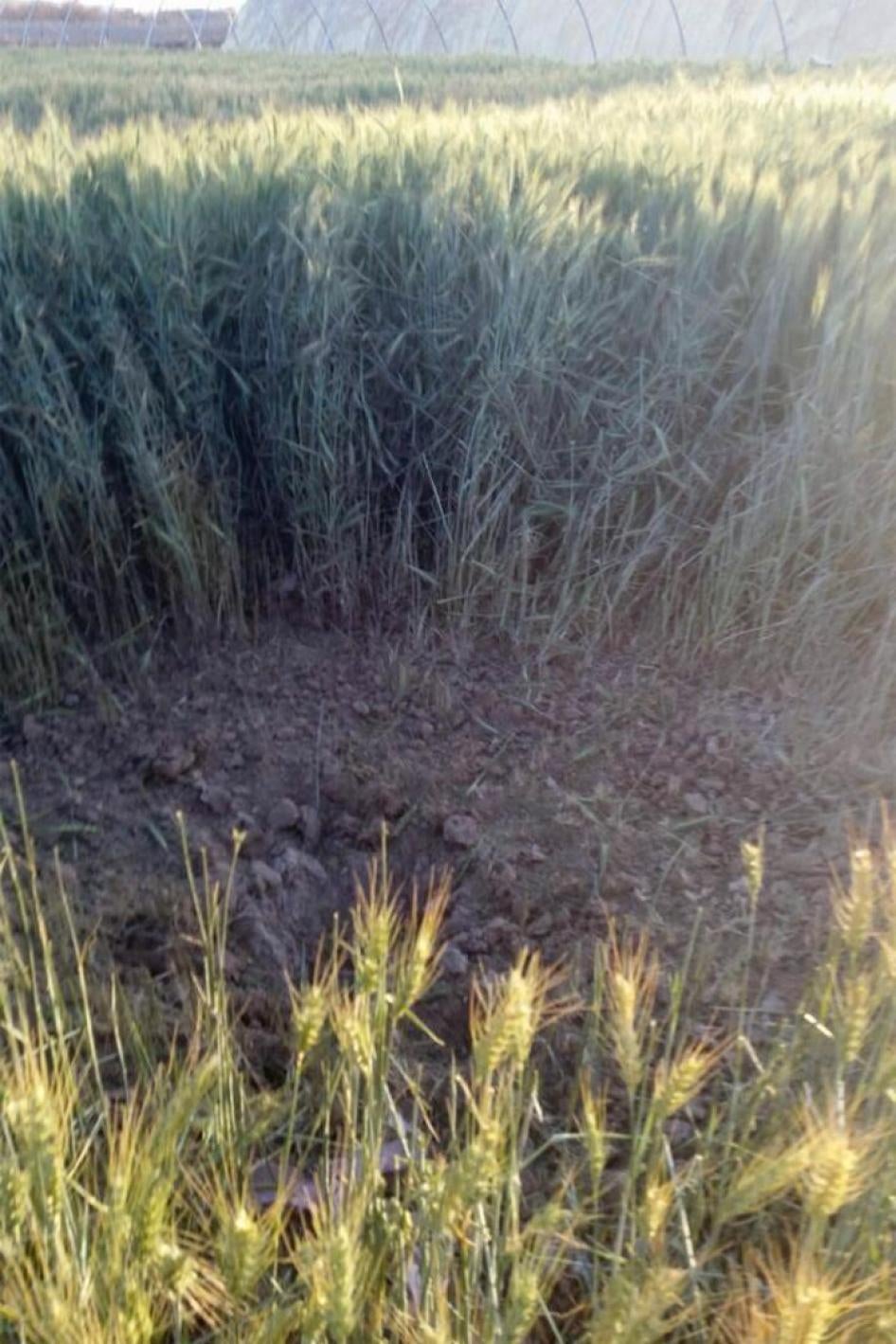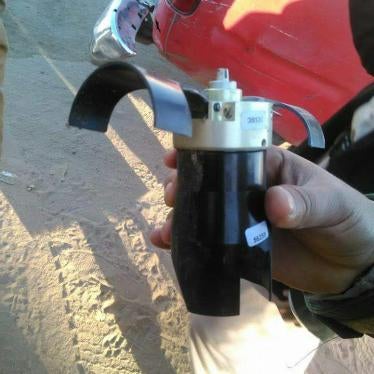(São Paulo) – The Saudi-led coalition launched Brazilian-made cluster munition rockets that struck a farm in northern Yemen in late February 2017, wounding two boys, Human Rights Watch said today.
“The Saudi-led coalition’s continued use of widely banned cluster munitions in Yemen shows callous disregard for civilian lives,” said Steve Goose, arms director at Human Rights Watch and chair of the Cluster Munition Coalition, the international coalition of groups working to eradicate cluster munitions. “Saudi Arabia, its coalition partners, and Brazil, as a producer, should immediately join the widely endorsed international treaty that bans cluster munitions.”
Cluster munitions are delivered from the ground by artillery and rockets, or dropped from aircraft and contain multiple smaller explosive submunitions that spread out indiscriminately over a wide area. Many fail to detonate and leave unexploded submunitions that become de facto landmines, posing a threat long after a conflict ends.
On February 22, at about 3 p.m., Muhammad Dhayf-Allah, 10, and Ahmad Abdul-Khaleq, 12, were working at their relatives’ farm at Qahza, in the al-O’albi area of northern Saada governorate, when it was attacked. Human Rights Watch interviewed by telephone two men who witnessed the strike. One witness provided photographs taken at the attack site shortly afterward that show remnants of part of a cluster munition rocket. Both witnesses said they heard a loud explosion followed by several smaller explosions, consistent with a cluster munition attack.
Muhammad Hunish Hawza, 60, an uncle of the boys, was in Qahza that day. “We heard blasts in the air, dozens of multiple small blasts together,” he said. “The small bombs fell over us.”
One of the farm owners, Tareq Ahmad Saleh al-O’airi, 25, said he had been in a greenhouse with the boys pruning cucumber and tomato plants. They heard a blast, went outside, and saw a bomb explode about 50 meters away. He said he told the frightened children to lie down.
“One of the bombs fell five meters away and exploded over us, wounding the two children,” he said. “Two or three bombs exploded inside the greenhouses [and] around 60 bombs exploded in the area. It was like Judgment Day.”
Dhayf-Allah was wounded in his left forearm, and Abdul-Khaleq in his right thigh and back. Relatives took the boys to al-Jumhouri Hospital for treatment.
Photographs that al-O’airi provided show part of the bursting mechanism from an ASTROS II cluster munition rocket lying where witnesses said it landed, near a greenhouse at the farm. Other photographs show solar panels damaged by fragmentation consistent with submunitions from a cluster munition attack. Hawza, the boys’ uncle, said that the attack destroyed more than 30 solar panels.
Al-O’airi said that the farm is three to five kilometers north of al-Saifi military camp, which is controlled by the Houthi-Saleh forces fighting the coalition. Both witnesses said this was the second time coalition attacks have hit the farm since the coalition began its aerial campaign in Yemen in support of the government of President Abdu Rabu Mansour Hadi against the Houthi-Saleh forces in March 2015.
ASTROS cluster munition rockets have been used on at least three previous occasions since the Saudi-led coalition began its intervention in Yemen, killing two civilians and wounding at least 10.
ASTROS II surface-to-surface rockets are delivered by a truck-mounted, multibarrel rocket launcher. Each rocket contains up to 65 submunitions. Bahrain and Saudi Arabia have purchased ASTROS cluster munition rockets from Brazil, where they are manufactured by Avibrás Indústria Aeroespacial SA.
On March 9, 2017, the Brazilian arms manufacturer Avibras stated that it could not confirm its cluster munitions had been used in Yemen, but claimed that since 2001, its ASTROS cluster munition rockets have been equipped with a “reliable self-destruct device that complies with humanitarian principles and legislation” of the Convention on Cluster Munitions.
Cluster munitions are prohibited by a 2008 treaty ratified by 100 countries and signed by another 19, though not by Yemen, Brazil, and Saudi Arabia, and its coalition partners Bahrain, Egypt, Jordan, Kuwait, Morocco, Qatar, Sudan, and the United Arab Emirates.
The treaty prohibits all cluster munitions and does not exempt “self-destruct” variants, which leave explosive remnants that must be considered hazardous and not be handled or approached by anyone other than a trained technician. At least 14 countries that have ratified the Convention on Cluster Munitions have destroyed cluster munitions equipped with “self-destruct” features, including Chile, France, Germany, Japan, Norway, Spain, Sweden, Switzerland, and the United Kingdom.
Members of the Saudi-led coalition and other parties to the conflict, including the United States, should promptly join the Convention on Cluster Munitions and abide by its provisions, Human Rights Watch said. Brazil should end its production and transfer of cluster munitions. In February 2017, Yemen’s Ministry of Human Rights told Human Rights Watch during a visit to Aden that Yemen was ready to sign the treaty when parliament reconvened.
“The Brazilian government’s silence is a wholly inadequate response to mounting concerns over civilian casualties from the Saudi-led coalition’s use of Brazilian cluster munition rockets in Yemen,” Goose said. “Brazil should recognize that cluster munitions are prohibited weapons that should never be manufactured, transferred, or used because of the harm inflicted on civilians.”
Coalition Use of Cluster Munitions
Since March 26, 2015, a Saudi-led coalition of nine Arab states has conducted military operations in Yemen against the Houthis, also known as Ansar Allah, and forces loyal to former President Ali Abdullah Saleh. Human Rights Watch and Amnesty International have documented the use of seven types of air-delivered and ground-launched cluster munitions made in the US, the UK, and Brazil.
Human Rights Watch has documented the coalition’s use of cluster munitions in 18 unlawful attacks in Yemen that killed at least 21 civilians, wounded 74 more, and in some cases, struck civilian areas.
The coalition has acknowledged using US- and UK-made cluster munitions in Yemen, but claims to have done so in compliance with the laws of war. In a January 11, 2016 interview with CNN, the coalition military spokesman said the coalition used CBU-105 Sensor Fuzed Weapons in Hajjah in April 2015 “against a concentration of a camp in this area, but not indiscriminately.” He said that the US-made cluster munitions were used “against vehicles.”
In May 2016, the US suspended transfers of cluster munitions to Saudi Arabia. In December, the coalition announced it would stop using a UK-made cluster munition, the BL-755, but left open the possibility it would continue using other types of cluster munitions in Yemen.
Human Rights Watch previously documented Saudi Arabia’s use of ASTROS cluster munition rockets in Khafji, Saudi Arabia, in 1991, during the First Gulf War. The munitions left behind a significant number of unexploded submunitions.
The three earlier attacks in Yemen where the Saudi-led coalition used Brazilian-made cluster munition rockets during the current conflict include:
· Amnesty International reported an ASTROS cluster munition rocket attack on February 15, that hit the residential areas of Gohza, al-Dhubat, and al-Rawdha, wounding two civilians.
· Human Rights Watch documented an ASTROS cluster munition rocket attack by the Saudi-led coalition near two schools in the al-Dhubat neighborhood of Saada’s Old City on December 6, killing two civilians and wounding at least six, including a child.
· Amnesty International found remnants of ASTROS cluster munition rockets remaining after an attack on Ahma in Saada on October 27, 2015, that wounded at least four people.
